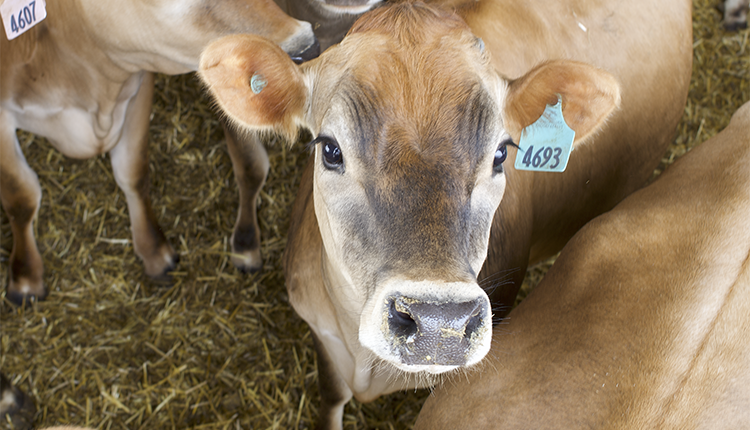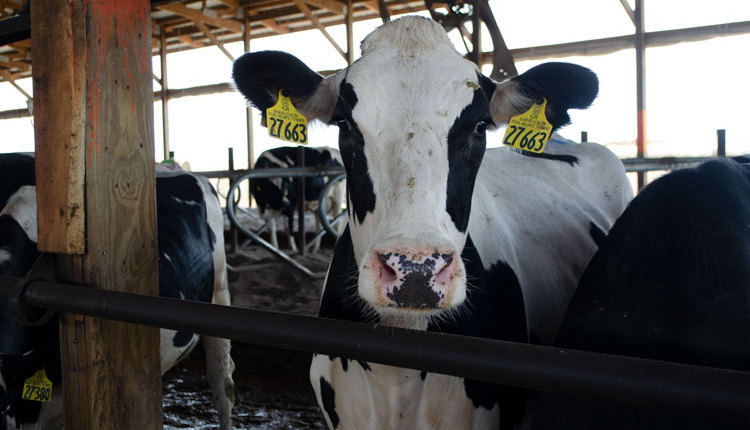
If you asked me several years ago about lactose, I would have said it makes up 4.8% of milk and is the osmotic regulator of milk volume and left it at that. Not much interest was paid to lactose for many years, as it had been viewed widely as a low-informative trait. However, with routine milk analysis by mid-infrared spectroscopy in Dairy Herd Information Association (DHI) and payment testing programs, lactose results have been reported and monitored more frequently. In our milk laboratory, I am amazed at just how different the lactose content (percentage) is among our individual cow milk samples as well as milk samples from different herds.
The importance of lactose in dairy science
Recent articles in the Journal of Dairy Science by Costa and colleagues (2019), Portnoy and Barbano (2021) have reshaped my understanding of lactose. Despite being a major milk solid, lactose has the lowest commercial value compared to other milk solids like fat and protein. Various methods exist to determine lactose concentration, including enzymatic assays, high performance liquid chromatography (HPLC), and mid-infrared spectroscopy analysis. Portnoy and Barbano emphasized the importance of reporting lactose as anhydrous lactose due to its growing significance in dairy food processing and herd management. In 2017, the USDA federal milk market laboratories began reporting lactose content as anhydrous lactose, discontinuing the previous method of reporting lactose by difference. Consistent and accurate methods are critical for developing new dairy products, marketing existing ones, and finding new, value-added uses for lactose. High-quality lactose data is also essential for farm management decisions, particularly in terms of production efficiency and health status.
Factors affecting lactose content
Understanding the factors that influence lactose content is vital, especially given the challenge of finding economically viable uses for lactose, which is often a by-product of cheese, high-protein milk, or whey powder manufacturing. Portnoy and Barbano suggested that farmers should focus on high-value milk components like fat and protein produced per unit of lactose. We looked at the ratio in our herd over several years and noticed a lot of variation (see figures) that suggests we may be able to alter it through genetics and herd management.
A different study published in the Journal of Dairy Science by Gargiuio and colleagues (2025) explored sources of variation in lactose production in dairy cows by analyzing 14 years of data (2008 to 2022) from 33,280 cows across 85 herds. Significant variations were found in lactose percentage (LP), lactose yield (LY), and milk solids yield (MSY) across breed, parity, stage of lactation, and season. Holsteins had the highest LY and MSY and lowest LP while Jerseys had the highest ratio of MSY:LY. The heritability of LP, LY, and MSY:LY ranged from 0.24 to 0.33, indicating moderate genetic influence.
Implications for dairy herds
Gargiuio and colleagues suggested that identification of cows with lower LP or higher MSY:LY ratio is an opportunity for selective breeding to add to the production of economically important milk components while lowering milk volume thereby improving milk production efficiency. Milk from first-lactation cows had higher LP and lower LY than older cows. Interestingly, LP did not follow the typical lactation curve shape of fat and protein percentages with LP being highest in early lactation and lowest in late lactation. As expected, LY was related to milk yield and peaked during early to mid-lactation. Cows with lower LP had higher somatic cell counts, although the correlation was low (-0.3). Seasonal variations were observed with LP being highest in the summer and lowest in the fall, while LY was highest in the spring and lowest in the fall.
Conclusion
By understanding and managing factors that influence lactose production, farmers can potentially improve milk production efficiency and economic return. The evolving knowledge about lactose underscores its importance in farm management and food processing, paving the way for more informed decisions on-farm and innovative uses of this milk component.



Low is ME305 milk from 24,140 to 31,099 lbs.
Low-medium is ME305 milk from 31,100 to 33,749 lbs.
Medium is ME305 milk from 33,750 to 36,349 lbs.
Medium-high is ME305 milk from 36,450 to 39,669 lbs.
High is ME305 milk from 39,670 to 49,970 lbs.
To comment, email your remarks to intel@hoards.com.








